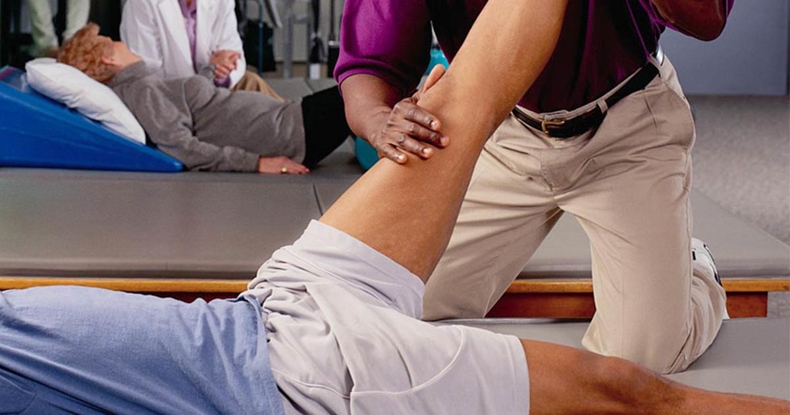Learn about Rheumatoid Arthritis
- Category: Health & Wellness, Bone and Joint Health
- Posted On:
- Written By: LVMC

Though February 2 is widely known as Groundhog Day, a group of people suffering from autoimmune and inflammatory disease also mark the date. The Rheumatoid Patient Foundation created Rheumatoid Awareness Day on Feb. 2 each year, to raise awareness for the people who daily live with the pain and side effects of the disease.
Rheumatoid arthritis, or RA, occurs when your immune system attacks healthy cells in your body, causing inflammation, or painful swelling. Its actual causes are not known, but there are some factors that can increase the risk of developing the disease.RA mostly occurs in the joints, and often many joints at the same time, such as the hands, wrists, and knees. When a joint has RA, the lining of the joint becomes inflamed, causing damage to joint tissue, causing long-lasting pain, a lack of balance, and often misshapen joints.
The most common signs of RA include:
- Pain or aching in more than one joint
- Stiffness in more than one joint
- Tenderness and swelling in more than one joint
- The same symptoms on both sides of the body
- Weight loss
- Fever
- Fatigue
- Weakness
How is RA Diagnosed?
Your physician may diagnose RA by conducting a physical exam and ordering X-rays and lab tests. If a diagnosis is made soon after your symptoms begin, you may have a chance of slowing the disease progression and damage to your joints. You may be referred to a specialist known as a rheumatologist.
What are the risk factors?
RA can be diagnosed at any age, even in children. The likelihood, however, increases as personages. The onset of RA is higher for people in their 60s. Gender can also play a factor in diagnosis, as women are 2-to-3 times more likely to have RA. For some people with specific genes called HLA, the risk factors are also higher. HLA, or human leukocyte antigen class II genotypes can make arthritis worse. According to the Centers for Disease Control (CDC), the risk of developing RA may be highest when people with HLA genes are also exposed to environmental factors, such as smoking, or if they are obese. The CDC also indicates that women who have never given birth may also be at greater risk for developing RA while women who have breastfed their infants have a decreased risk.
Are there complications from RA?
RA can cause chronic pain, disability, and premature death in some people. There are also other potential complications:
- Heart Disease: People who have RA may be at a higher risk for developing other chronic illnesses such as heart disease and diabetes.
- Obesity: People who are obese and also have RA may have an increased risk of developing heart disease factors, such as high blood pressure and high cholesterol.
- Unemployment: Some people with RA may find it very difficult to work due to the pain and loss of mobility. People who are diagnosed with RA may not be able to do physically demanding jobs.
How is RA treated?
If you are diagnosed with RA, it’s likely you will be treated with medication and other strategies. A physician may recommend you take medications to slow the progress of the disease and prevent deformity in your joints. These are called antirheumatic drugs or biological response modifiers. Your physician may also recommend strategies such as making sure you are physically active, which helps decrease pain and improves function. You will also likely be advised to maintain a healthy weight, to reduce the impact on your joints.
What can I do with RA?
Even though RA will impact many areas of a person’s daily life, there are ways to live with the disease and maintain quality of life. Walking often eases the pain from arthritis but remember to start slow and pay attention to your body. You may have to modify the activities you are used to doing, and you should consider activities that are easier for your joints. If you are uncertain or overwhelmed, talk to a physician or mental health expert. You can also seek out a certified exercise specialist or trainer to help you find activities that match your physical abilities and limitations.




